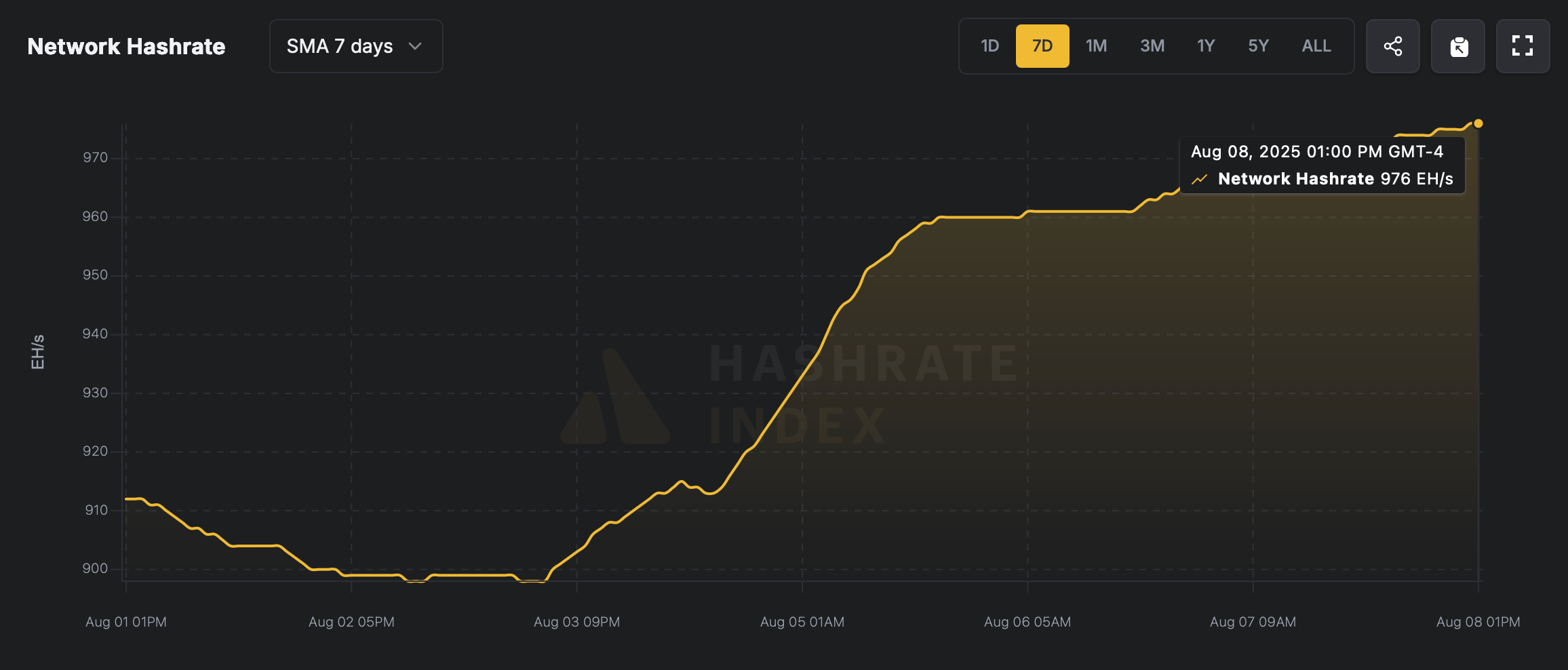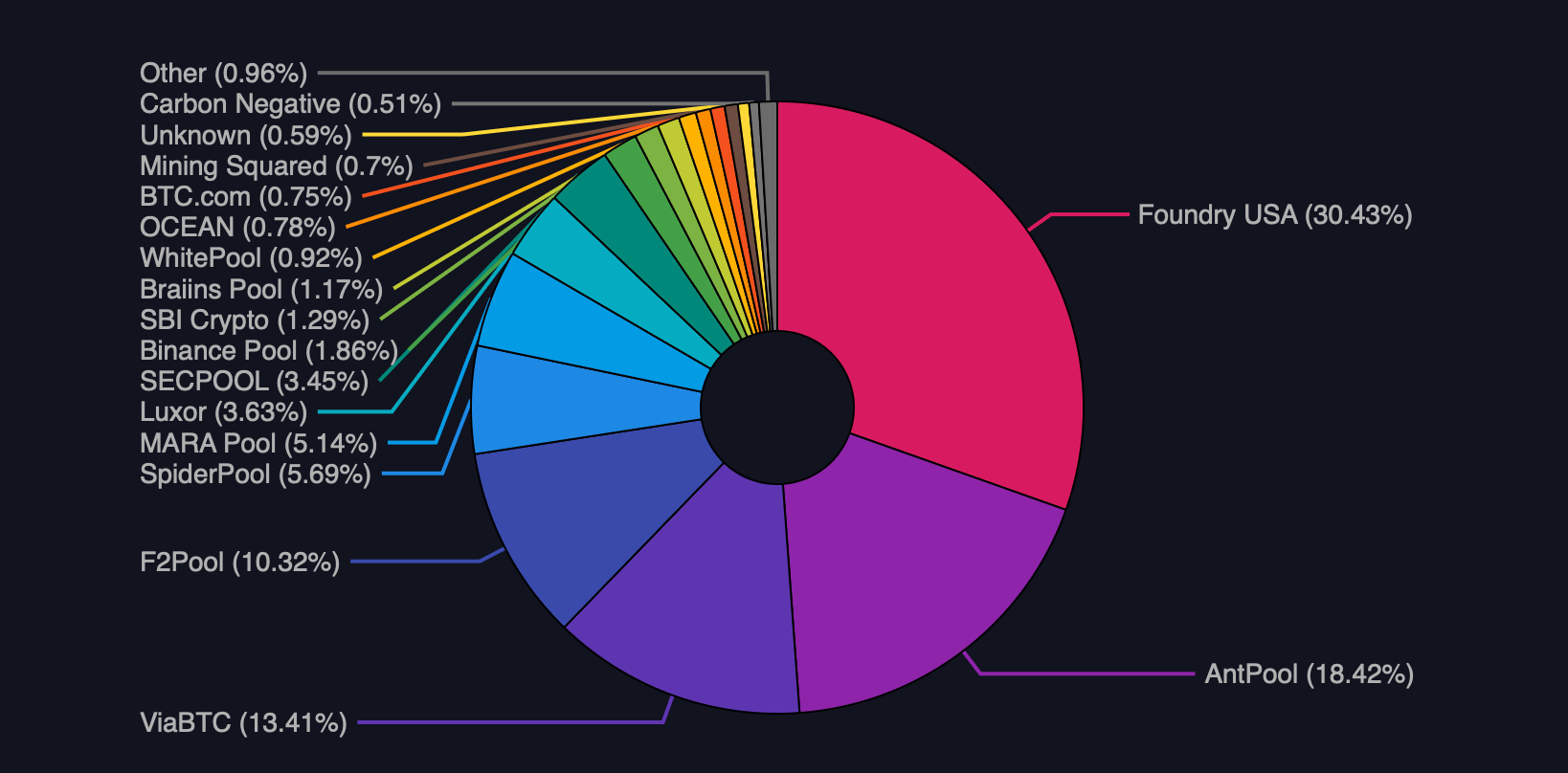Bitcoin Hashrate Soars to 976 EH/S — Just a Hair's breadth from 1 ZH/s Glory

On Friday afternoon, after Bitcoin's hashrate reached 970 exahashes per second (EH/s) the day before, it increased even further to 976 EH/s – just 24 EH/s short of the monumental 1 zettahash per second (ZH/s) threshold.
Bitcoin Mining Power Continues to Grow
The hashrate continued to increase, and just ten blocks before the next network difficulty adjustment, the rate reached 976 EH/s based on a seven-day simple moving average (SMA), according to hashrateindex.com.
 Computing power figures recorded by hashrateindex.com.
Computing power figures recorded by hashrateindex.com.
The seven-day SMA metric smooths out short-term fluctuations by averaging data over a set period, making it easier to spot true directional trends, as pinpointing the exact hashrate is notoriously difficult.
The seven-day simple moving average (SMA) has become a common indicator in the industry, providing a standardized snapshot that ensures consistency in analysis. For example, the three-day simple moving average (SMA) paints a much more optimistic picture of Bitcoin’s mining power, showing that the network briefly reached 1 zettahash between August 5 and 6 earlier this week.
At 2:05 PM ET, the real-time hashrate was 972 EH/s, with Foundry accounting for a whopping 278 EH/s, or 28.64% of the total hashrate. Antpool was second, controlling 18.1% of the hashrate with over 175 EH/s, while Viabtc was at 128 EH/s, or 13.25%. F2pool was fourth, with just over 100 EH/s, or 10.35% of the total network throughput.
 Distribution of mining pools according to mempool.space.
Distribution of mining pools according to mempool.space.
In fifth place, Spiderpool operates at 83 EH/s, which is 8.5% of Bitcoin’s total computing power. If the growth rate continues, this milestone could soon be surpassed, potentially changing industry standards and cementing the protocol’s status as the most secure and resilient blockchain in the world.
Bitcoin’s rise to 1 zettahash (1 sextillion hashes per second) marks a turning point for the network, indicating the scale of the resources that secure it. If growth continues, this milestone could soon be surpassed and become permanent, potentially changing industry standards and cementing the protocol’s status as the world’s most secure and reliable blockchain.
This high computing intensity also reflects growing competition among mining pools, where efficiency and scale can determine dominance. As leading players move ahead with ever-higher contributions, the race for control of the hash rate could lead to new investments in hardware, power sources, and global mining infrastructure, changing the balance of power in the Bitcoin mining market.
Source: cryptonews.net



